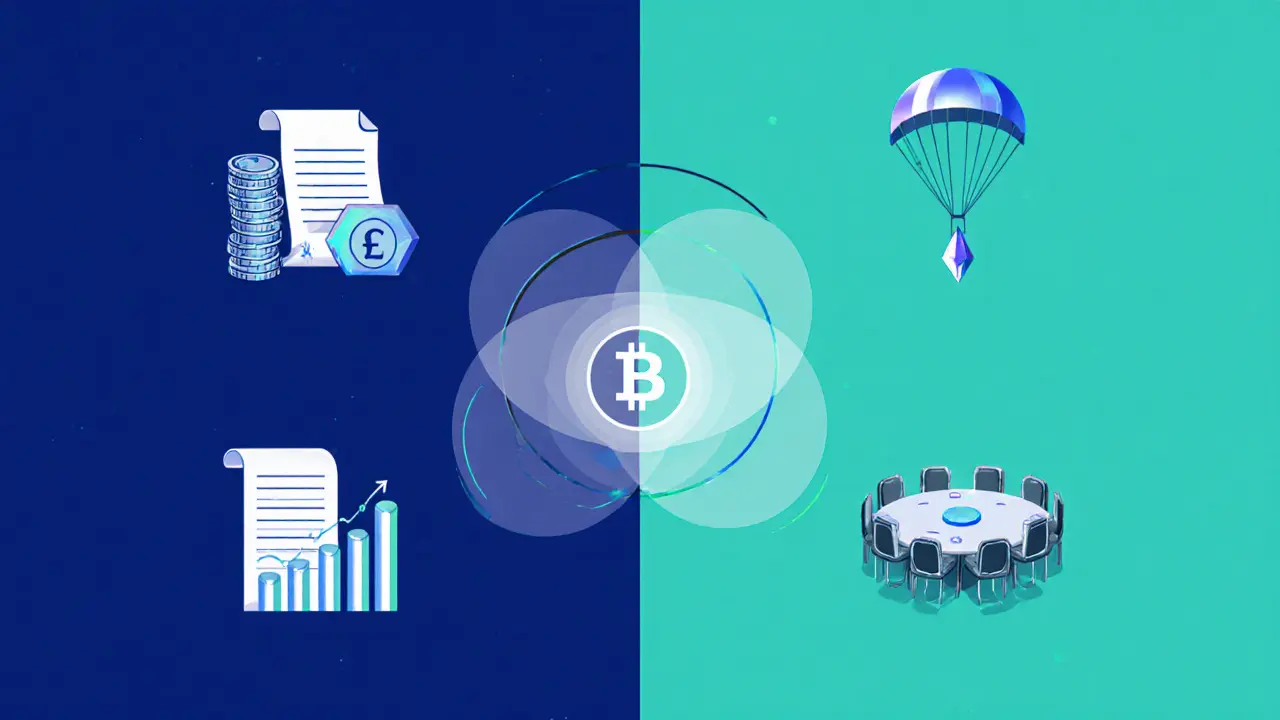ICO – The Basics, Risks, and Opportunities
When diving into ICO, an Initial Coin Offering is a fundraising method where new crypto tokens are sold to early supporters, also known as token sale, it helps projects raise capital while giving investors a chance to get in early.
Every token, the digital unit issued during an ICO, represents a share of the project's utility or equity and lives on a blockchain like Ethereum or Binance Smart Chain. Tokens can be utility, security, or governance types, each with its own rights and obligations. Understanding the token’s purpose is the first step before you consider buying, because the token’s design influences its future value and legal standing.
How Regulation Shapes ICOs
Regulators worldwide treat ICOs as a gray area that often falls under crypto regulation, laws that define how digital assets are issued, sold, and traded. In the U.S., the SEC may label a token as a security, triggering registration requirements similar to traditional securities. In the EU, MiCA introduces a passport system that lets compliant issuers operate across member states. The regulatory environment directly affects the ICO’s legal risk, the ability to list on exchanges, and the potential for future airdrops.
Another practical piece of the puzzle is the airdrop, a free token distribution often used to promote a new project or reward early supporters. Airdrops can increase community engagement and token liquidity, but they also bring tax implications and require compliance with anti‑money‑laundering rules. If an ICO plans an airdrop, the team must ensure the distribution complies with both local and international regulations.
Finally, once an ICO wraps up, the newly minted tokens need a place to trade. That’s where a crypto exchange, a platform that lists digital assets for buying, selling, and swapping comes in. Listing on a reputable exchange boosts credibility and provides liquidity, while listing on a lesser‑known platform can limit exposure. The exchange’s compliance standards also feed back into the ICO’s regulatory standing, creating a loop: a well‑regulated ICO is more likely to get onto top‑tier exchanges.
Putting it all together, an ICO encompasses token creation, regulatory navigation, potential airdrops, and exchange listings. These elements interact: token design influences regulatory classification, which affects exchange eligibility; airdrops can enhance community size, which makes exchange listing more attractive. Below, you’ll find a curated set of articles that unpack each of these pieces, from licensing guides and tokenomics deep‑dives to exchange reviews and airdrop instructions. Whether you’re a founder planning your own token sale or an investor scouting new opportunities, the collection gives you practical steps, real‑world examples, and clear checklists to move forward confidently.

Utility Token Distribution Models: A Practical Guide for Tokenomics Design
Nov 13, 2024, Posted by Ronan Caverly
Explore paid and free utility token distribution models, their legal implications, design considerations, and practical steps to build a fair, compliant tokenomics strategy.
MORESEARCH HERE
Categories
TAGS
- decentralized exchange
- crypto exchange review
- cryptocurrency
- crypto coin
- CoinMarketCap airdrop
- smart contracts
- tokenomics
- cryptocurrency exchange safety
- crypto exchange
- cryptocurrency airdrop
- crypto airdrop
- cryptocurrency exchange
- crypto airdrop guide
- blockchain token distribution
- DeFi
- crypto exchange scam
- crypto airdrop 2025
- Ethereum
- cross-chain interoperability
- ERC-20
